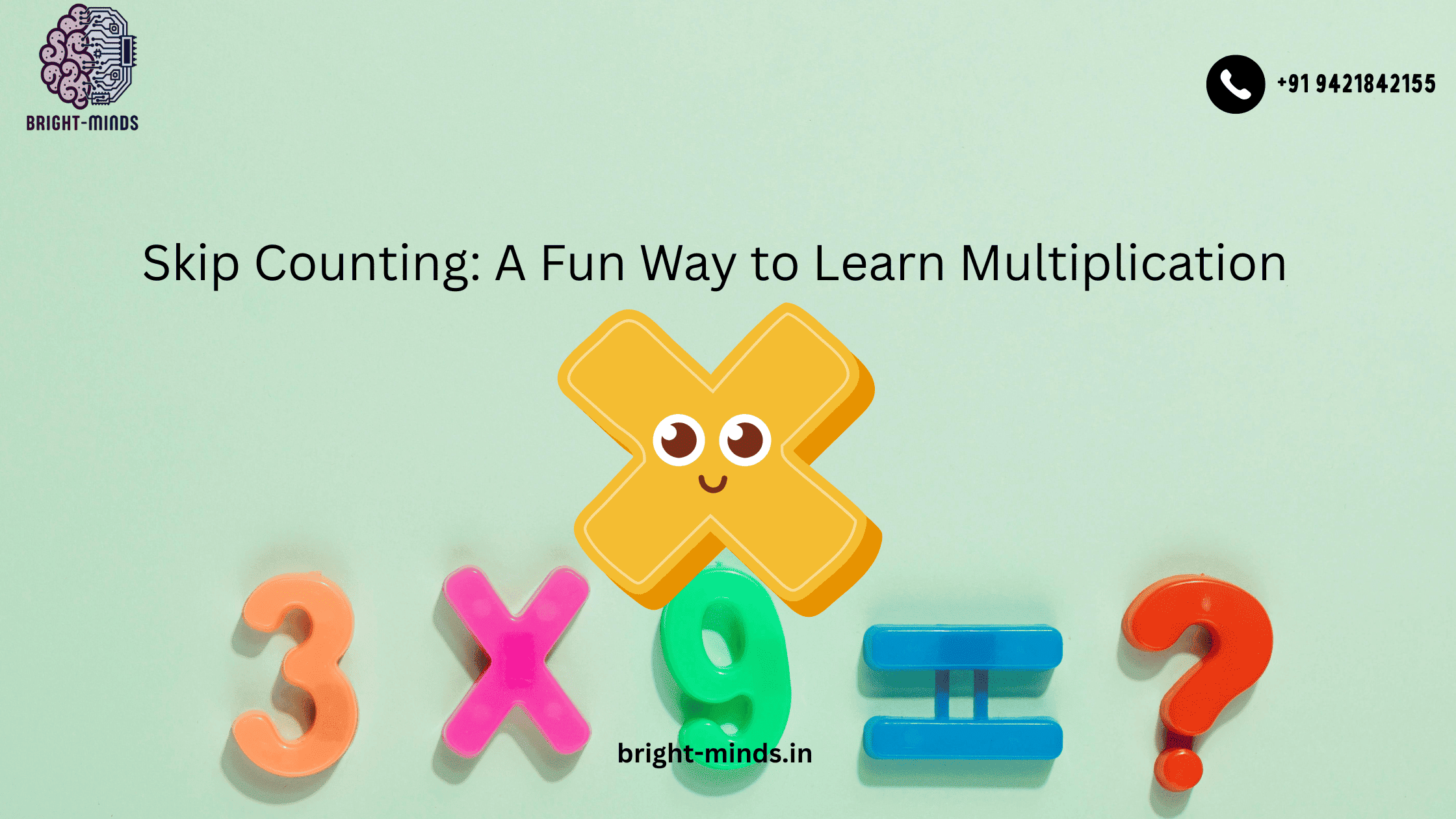Introduction
It’s not necessary for multiplication to be difficult or tedious. Actually, skip counting is one of the simplest and most enjoyable techniques to teach multiplication to children. It’s similar to counting, but different! Children that use skip counting are better able to recognize number patterns, comprehend multiplication, and develop their mathematical confidence.
Let’s explore the definition of skip counting, its significance, and how to engage your youngster in it.
What Is Skip Counting?
Counting ahead (or backward) by a number other than one is known as skip counting. Youngsters count in this manner rather than stating “1, 2, 3…”
- By 2s: 2, 4, 6, 8, 10…
- By 5s: 5, 10, 15, 20, 25…
- By 10s: 10, 20, 30, 40, 50…
It’s a stepping stone to multiplication. For example, if a child can skip count by 4s, they’re also learning the 4 times table!
Why Is Skip Counting Important?
- lays the groundwork for multiplication
- Children can better grasp the foundation of multiplication—repeated addition—by using skip counting.
- Enhances Number Sense
- Youngsters start to see numerical relationships and patterns, which are important for later arithmetic concepts.
- Enhances Mental Arithmetic
- It improves memory and speeds up computations.
- Improves the Ability to Solve Problems
- Using skip counting to identify patterns helps solve difficulties in real life.
You can also read for:- Addition and Subtraction Made Fun with Stories!
Skip Counting = Multiplication Made Easy
Here’s how skip counting connects to multiplication:
| Skip Counting | Multiplication |
|---|---|
| 3, 6, 9, 12 | 3 × 1 = 3, 3 × 2 = 6, 3 × 3 = 9… |
| 4, 8, 12, 16 | 4 × 1 = 4, 4 × 2 = 8, 4 × 3 = 12… |
| 5, 10, 15, 20 | 5 × 1 = 5, 5 × 2 = 10, 5 × 3 = 15… |
So, instead of memorizing random tables, kids understand the flow of numbers.
Fun Activities to Practice Skip Counting
1. Clap & Count
Pick a number (like 2), and clap every time you skip count: “2, 4, 6, 8…”. It helps build rhythm and memory!
2. Hopscotch Math
Draw numbers on the ground. As your child jumps, they say the skip counting numbers aloud.
3. Skip Counting Songs
There are fun songs for counting by 2s, 5s, 10s, etc. (YouTube is full of them!) Singing makes learning stick.
4. Bead Threading
Thread colored beads in patterns: 2 red, 2 blue, 2 red… Then count them in 2s as you go.
5. Color the Multiples
Give a hundred chart and let your child color every second, third, or fifth number. Patterns emerge and make learning visual.
Sample Skip Counting Chart
Here’s how skip counting by 3 looks:
3, 6, 9, 12, 15, 18, 21, 24, 27, 30
Ask your child:
- What do you notice?
- What’s the difference between each number?
- Can you write the multiplication sentence?
This reinforces learning naturally.
Tips for Parents & Teachers
- The easiest ones to start with are the 2s, 5s, and 10s.
- Make it graphic and interactive.
- Practice frequently in quick, enjoyable sessions.
- Give instances from everyday life, such as counting socks, candy, or stairs.
- Stress the link between multiplication and skip counting.
Conclusion
Skip counting is the key to mastering multiplication and is more than just a counting trick. Children in Grades 1–5 will find it simple, rhythmic, and enjoyable. Your youngster can learn arithmetic in a fun way by using games, music, and practical application.
So let’s count, jump, and skip our way to success in multiplication!
You may be interested in this:
Prime Numbers for Kids: A Fun and Easy Guide to Understanding Prime Numbers

